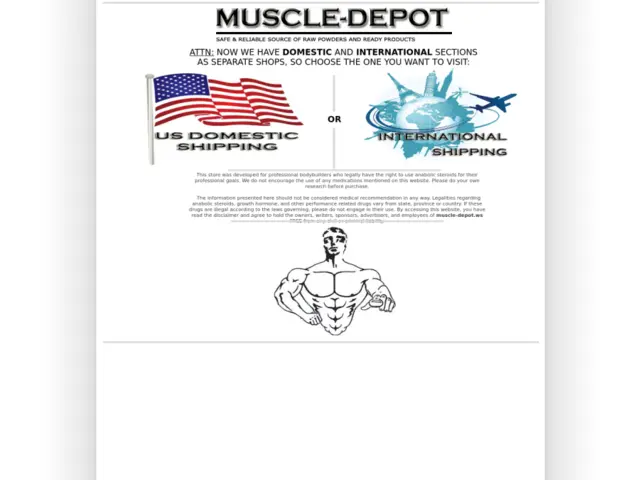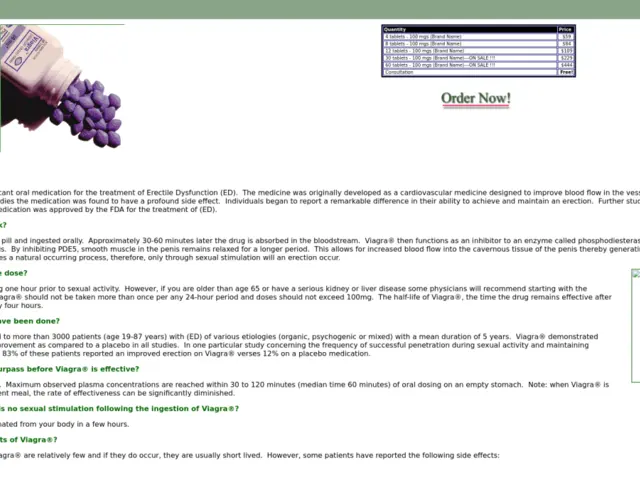If you’ve ever dealt with relentless joint pain or a pounding headache that laughs in the face of regular medication, odds are you’ve come across the name Naprosyn. While the world spins on coffee and willpower, plenty of people credit their daily comfort to this straightforward anti-inflammatory pill. In 2025, prescription rates are steady, and new parents, runners, and even desk workers who hunch over laptops for hours might all reach for Naprosyn long before considering anything drastic. So, what exactly makes Naprosyn a staple in so many medicine cabinets?
What is Naprosyn and How Does it Work?
Naprosyn packs naproxen, a nonsteroidal anti-inflammatory drug (NSAID), which is the same stuff hiding in lower doses inside your favorite over-the-counter pain relievers. But don't mistake Naprosyn for just another bottle on the shelf—it’s available by prescription for a reason. The secret sauce? Naprosyn blocks enzymes called COX-1 and COX-2, which help your body make prostaglandins, those tiny messengers that spark pain and swelling. Stop the message, stop the pain. That’s the simple science.
Naproxen takes the edge off not just regular headaches, but also sharp post-surgery pain, muscle aches, menstrual cramps, and the deep burn of arthritis and gout. If you look at the official stats, about 20 million naproxen prescriptions were written across the U.S. in 2024 alone. Physical therapists recommend it for acute injuries, and people with chronic conditions get their long-term pain dialed back so they can actually enjoy a walk instead of dreading every step. That said, Naprosyn doesn’t just wipe your pain away instantly. It needs to be absorbed and kick in—usually within 1-2 hours for tablets, or sometimes a little faster if you’re taking it as a liquid suspension.
Doctors often suggest Naprosyn because it hangs out in your body longer than ibuprofen, so you don’t have to take it as often throughout the day. For adults, the usual starting dosage sits between 250 and 500 mg every 12 hours, but it’s tailored to your condition and how your body tolerates it. There’s no 'one size fits all' here; your kidney health, age, and what else you’re dealing with matter. That’s why you shouldn’t borrow someone else's script, even if that friend swears theirs is magic.
Here’s a quick breakdown of common uses in an easy-to-read table:
| Condition | Example Dosage (Adults) | Notes |
|---|---|---|
| Osteoarthritis | 250-500 mg twice daily | Regular use may be needed |
| Rheumatoid arthritis | 250-500 mg twice daily | Dose can be increased if needed |
| Gout flare-up | 750 mg first dose, 250 mg every 8 hrs | High initial dose, then taper down |
| Acute pain | 500 mg initially, then 250 mg every 6-8 hrs | Short-term use |
| Menstrual cramps | 500 mg initially, then 250 mg every 6-8 hrs | At symptom onset |
Who Should Consider Naprosyn?
Let’s be real: not every pain remedy is right for every person. Naprosyn is a solid choice if your pain is moderate to severe and you need more muscle than acetaminophen or over-the-counter naproxen can offer. It’s especially common for adults with joint problems, like those with osteoarthritis or people who get sidelined by a gout attack. If you’re a runner with bad knees, or you have a physically demanding job that leaves you sore, your doctor might reach for Naprosyn first.
Now, if you’re pregnant, especially beyond the 20th week, Naprosyn is usually not a good idea. It can affect the baby’s kidney function and cause complications. Kids under 12 usually steer clear, too, unless a specialist steps in. Anyone with a history of stomach ulcers, heart problems, high blood pressure, or kidney trouble should be extra careful. That’s not just the drug label scaring you—there are real risks in people with these backgrounds. In a review of over 5,000 patient cases, folks with pre-existing stomach ulcers saw complications rise four times faster when taking strong NSAIDs like naproxen.
If you’re juggling a bunch of meds, make sure your doctor reviews everything together. Naprosyn can interact with blood thinners, some antidepressants, steroids, and even certain blood pressure pills. I’ve been in the room with doctors who will literally write out a list on paper, just to double-check. And watch your alcohol: more than a couple drinks a week plus Naprosyn can turn your stomach lining into toast.
You might be thinking, “But Cedric, can’t I just buy naproxen at the pharmacy and call it a day?” Sort of, but the dosage is key. Prescription Naprosyn gives you a higher, longer-lasting dose under supervision. Self-medicating with over-the-counter stuff might work for the odd headache, but it falls short for gnarly, ongoing pain.

Side Effects and Safety: What You Need to Know
Every med, however helpful, comes with a list of possible headaches—sometimes literally. With Naprosyn, the most talked-about side effects fall under stomach complaints: nausea, indigestion, and in rare cases, bleeding ulcers. If you notice black, tarry stools or vomit that looks like coffee grounds, that’s your sign to call for help, not power through. No matter how tough you are, your stomach lining isn’t made of steel.
There are also risks to your heart and kidneys, especially if you take Naprosyn for months on end. Research from the British Medical Journal shows a boosted heart attack risk, especially for folks with existing cardiac conditions. The data is a little alarming—long-term users over 65 dealt with a 20% higher chance of heart-related issues compared to people who didn’t use NSAIDs. That’s why regular checkups matter. Even if you feel fine, silent problems can sneak up.
Here are some side effects people should look out for:
- Stomach pain or upset
- Heartburn or acid reflux
- Dizziness or headaches (not the kind you took the pill for)
- Fluid retention, which can mean swelling in your legs or hands
- Increased blood pressure
- Unusual bruising or bleeding
- Changes in your kidney function (rare but serious)
- Allergic reactions, which can range from skin rash to breathing trouble
Ways to lower your risk? Always take Naprosyn with food—never on an empty stomach. Limit your use and take the lowest effective dose possible for the shortest amount of time. If you need this drug every day, let your doctor know if you notice unusual tiredness, swelling, or any sign that you’re peeing less than usual.
And here’s a not-so-obvious tip: some people split up their dose, thinking it’ll be gentler. But skipping, splitting, or crushing Naprosyn tablets doesn’t make them safer. It just messes with the release and can trigger irritation or make them less effective. If the standard dose feels too much, talk to your doctor instead of improvising.
Buying Naprosyn: Real Advice from the Pharmacy Aisle
Getting your hands on actual Naprosyn, especially at the right dose, means you need a prescription. Those generic naproxen sodium bottles at the supermarket rarely go above 220 mg per pill, and the real deal starts at 250 mg. So if you see anyone selling 'Naprosyn' without checking your doctor’s note, be skeptical. It’s not just about the law—there’s a big difference in quality and dose.
When buying online, make sure the pharmacy is fully licensed. Stick to national chains or well-known digital pharmacies. Sites accredited by the National Association of Boards of Pharmacy show a blue checkmark. Avoid flashy pop-ups offering deep discounts or promising to ship without a script—they’re usually selling counterfeits. The stats on fake medication are staggering: the World Health Organization estimates that 1 in 10 medical products in the world is substandard or fake, and pain meds are big targets.
Cost is a hot topic, too. As of late 2024, generic naproxen usually runs between $8 and $25 for a month’s supply, while brand-name Naprosyn can sometimes hit $80—or even $120 if your insurance doesn’t cover much. If your doctor says brand-name “only,” triple-check your insurance plan or ask about discounts. Some programs and coupon sites slash the price almost in half if you know where to look. And don’t forget to check if your local pharmacy offers memberships with extra savings for prescription drugs.
If you’re new to Naprosyn, here’s what I tell friends and family who ask:
- Get your prescription filled at a reputable pharmacy, even if it’s not the cheapest option.
- Double-check the dose and name before you leave the counter. Pills should say “NAPROSYN” or “naproxen” with the right number stamped on them.
- Store your pills somewhere cool and dry—not in your steamy bathroom.
- Never double up on the dose if you forget one. Skip and catch the next scheduled dose if needed.
- Ask your pharmacist about possible drug interactions, especially if you take meds for blood pressure, diabetes, or depression.
If you’re still not sure, it doesn’t hurt to grab a quick consult with your doc before you commit. I’ve seen more than one friend try to self-diagnose, only to end up sicker because a hidden stomach issue got blown wide open by NSAIDs like Naprosyn. When in doubt, trust a professional over a quick internet search.
Living with daily pain sucks—nobody chooses that. But with the right approach and a little expert advice, Naprosyn can be a safe and reliable way to reclaim your days, so you can get back to chasing your goals, not just your next round of pain relief. Don’t settle for just “getting through it”—figure out what works safely and stick with it.





Beverly Pace - 10 July 2025
If you’re not willing to read the label and follow your doctor’s orders, you don’t deserve the relief Naprosyn offers.
RALPH O'NEIL - 20 July 2025
It’s wise to keep track of your dosage and schedule appointments to monitor kidney and heart health while on Naprosyn.
Mark Wellman - 30 July 2025
Man, I’ve been takin’ Naprosyn for a while now and let me tell you, the whole thing is a rollercoaster of feelings and side effects that nobody seems to talk about enough.
First off, the stomach trouble is real – I’ve had more nausea than a sick kid on a boat ride, and the acid reflux feels like a tiny fire breathing down my throat.
Then there’s the weird dizziness that hits you outta nowhere, like you’re on a swing that just stopped mid‑air.
People keep hypin’ up how great it is for arthritis, but they forget to mention the occasional headaches that can be as bad as the original pain you’re trying to dodge.
I read somewhere that the drug can mess with your blood pressure, and honestly, I’ve felt my pulse jump like a drum when I’m stressed and on the med.
Kidney function? Yeah, that’s another thing – I got a warning from my doc about monitoring creatinine, and I was like, “Seriously?”
And don’t get me started on the heart – there’s research talkin’ about increased risk of MI, especially for older folks, which makes me think twice before loading up.
But the real kicker? The counterfeit pills floating around the internet that look like the real Deal, but are basically junk that can kill you faster than a bad hangover.
People think they can split the tablets to feel less intense, but that just messes with the release mechanism and can irritate the gut even more.
In my experience, the best way to stay safe is to take it with food, set a reminder so you don’t forget a dose, and keep a journal of any weird symptoms.
One time I was taking it with a glass of orange juice and felt a buzzing in my ears that lasted a full hour – I swear that’s not normal.
Also, if you’re mixing it with alcohol, you might as well be signing up for a stomach ulcer faster than you can say “naproxen”.
Another thing people ignore is the drug interaction with blood thinners; my friend on warfarin had a scary bleed after a short stint on Naprosyn.
Bottom line: it works, but you gotta respect the power behind that pill, or you’ll pay the price.
Honestly, I wish there were more straightforward guidelines from pharmacists so we don’t have to rely on trial‑and‑error.
Stay safe out there, and don’t think a cheap online buy is worth the risk.
Amy Morris - 9 August 2025
I hear you, Mark – the battle with that gnawing pain and the hidden dangers can feel like a storm raging inside, and it’s terrifying when your body starts sending mixed signals.
It’s heartbreaking to watch someone you care about struggle with side‑effects that turn a simple relief into another source of anxiety.
Your vivid recount really highlights how vulnerable we all become when the medicine that’s supposed to help also threatens our well‑being.
Remember, you’re not alone in this; many of us have walked that tightrope between pain relief and safety, and sharing these stories can be a beacon for others navigating the same fog.
Keep a close dialogue with your healthcare provider, and never dismiss those strange sensations – they’re your body’s way of asking for a pause.
Francesca Roberts - 19 August 2025
Sure, empathy’s great and all, but let’s not pretend you’re the first person to discover that Naprosyn can be a double‑edged sword – the FDA’s own label warns about GI bleeds, and even the most “dramatic” anecdotes don’t change the facts.
Here’s a tip: ask your pharmacist for a gastro‑protective agent if you’re worried, because that’s what the pros do, not some vague “listen to your body” mantra.
And hey, next time you’re tempted to write a novel about side‑effects, maybe just copy the official patient information sheet – it’s already written in plain English, typo‑free, and actually useful.
Becky Jarboe - 29 August 2025
When considering Naprosyn, clinicians often reference its pharmacokinetic profile: a half‑life of approximately 12‑17 hours allows for bid dosing, which can be advantageous for chronic inflammatory conditions.
However, prudent titration based on patient‑specific factors – such as eGFR, hepatic function, and concurrent anticoagulant therapy – remains paramount to mitigate adverse events.
Utilizing the lowest effective dose for the shortest duration aligns with the principle of deprescribing, especially in populations at heightened cardiovascular risk.
Carl Boel - 8 September 2025
Let’s be clear: our nation’s healthcare system should prioritize safe prescribing practices, and that starts with clinicians standing firm against the over‑reliance on powerful NSAIDs like Naprosyn without proper monitoring.
We can’t afford a generation of citizens sidelined by preventable GI bleeds or cardiovascular events because someone shrugged off a warning label.
Patriotic duty demands diligent oversight and patient education – that’s how we keep America healthy and productive.
Shuvam Roy - 17 September 2025
Friends, it is essential to consult with your healthcare professional before initiating any naproxen therapy, ensuring that your individual medical history is thoroughly reviewed.
Please adhere strictly to prescribed dosages, take the medication with food, and remain vigilant for any adverse signs such as unexplained bleeding or swelling.
By maintaining an open dialogue with your physician, you safeguard both efficacy and safety.
Jane Grimm - 27 September 2025
I appreciate the courteous tone, yet the statement “essential to consult… ensuring that your individual medical history is thoroughly reviewed” suffers from redundancy; the verb “ensure” already implies a thorough review, rendering the phrase pleonastic.
Moreover, the passive construction “unexplained bleeding or swelling” could be rendered more precise by specifying “gastrointestinal bleeding, hematuria, or peripheral edema.”
Such linguistic precision not only enhances clarity but upholds the standards of medical communication.
Nora Russell - 7 October 2025
While the pursuit of linguistic exactitude is commendable, it betrays a pedantic preoccupation with form over function that alienates lay readers who seek actionable guidance rather than a treatise on syntax.
One must weigh the marginal gains in lexical precision against the potential erosion of accessibility; an overly erudite exposition may inadvertently obfuscate the very safety messages that are paramount.
Thus, a balanced approach-conveying critical health information in clear, non‑technical language while maintaining factual integrity-serves the broader public interest more effectively.
Craig Stephenson - 17 October 2025
All in all, it looks like Naprosyn can be a useful tool when used responsibly – talk to your doctor, follow the dosing guide, watch for side effects, and keep an eye on any drug interactions.
Tyler Dean - 27 October 2025
Sure, but remember that the pharmaceutical lobby pushes drugs like Naprosyn to keep us dependent on big‑pharma profit cycles; the “talk to your doctor” line is just a way to keep us from questioning the deeper agenda.